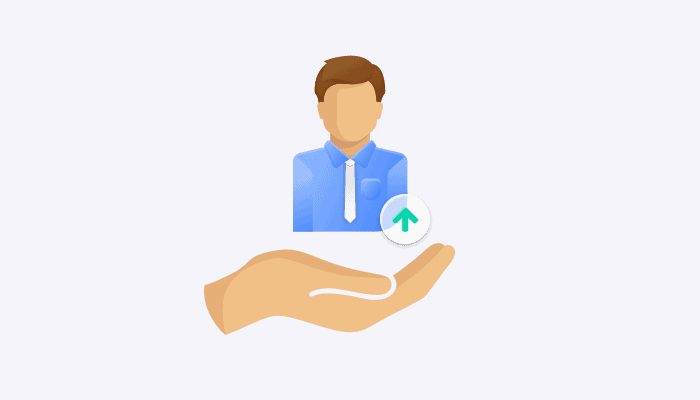
Patient satisfaction VS patient experience
Patient satisfaction and patient experience are integral components for measuring healthcare quality. These terms are often used interchangeably although they have different meanings. Patient satisfaction focuses on whether the patient is satisfied with the overall service provided, while patient experience focuses on their engagement with the healthcare system, including, health plans, doctors, nurses, staff interactions, and healthcare settings. Patient experience can be surveyed after every engagement along their healthcare journey whereas patient satisfaction is measured at the end.
Ultimately positive patient experience leads to higher rates of overall patient satisfaction, which in turn leads to increased revenues and a host of other positive outcomes.
In this article, we will explain how using QuickBlox can promote a positive patient experience leading to improved patient satisfaction levels for the benefit of patients and healthcare providers alike.
Why is patient satisfaction and experience important?
High rates of patient satisfaction and a positive patient experience are critical because they impact outcomes for healthcare service providers.
Hospitals and clinics with higher patient satisfaction levels tend to have:
- Greater patient engagement and retention
- Enhanced professional reputation
- Better clinical outcomes
- Improved and more consistent revenue streams
Boosting Patient Experience and Satisfaction with QuickBlox
QuickBlox is an infrastructure messaging service for enterprises. It offers a communication platform as a service (CPaaS) that includes instant real-time messaging, video/ audio calling, video conferencing, file sharing, and push notification.
As an infrastructure provider platform, it provides the enterprise with several SDKs (Software Development Kits) and a server REST-API. These development tools provide flexibility for the enterprise to build its custom application for its specific workflow.
Because it supports customized workflow, QuickBlox applications ensure a productivity boost in hospitals and seamless communication among medical staff, nurses, hospital departments, financing team, management, and infection control teams.
QuickBlox communication solutions can be used to promote productivity and the quality of healthcare services, thereby improving patient experience and increasing patient satisfaction.
Using QuickBlox to Improve Patient Satisfaction
- Improved communication
Clear, time-sensitive, and direct communication is essential in the hospital environment. A seamless communication channel between staff increases productivity and enhances their responsiveness. Similarly, timely and smooth communications between doctors and patients lead to a positive experience for patients and improve their overall satisfaction with services. However, many hospital management systems (HMS) and hospital information systems (HIS) do not have real-time instant communication or alerting functionalities.
QuickBlox provides an instant messaging service, real-time HD video/ audio calling and conferencing, file-sharing, and instant mobile and desktop push notification. QuickBlox enables developers to build customized applications to fit any hospital workflow or integrate QuickBlox messaging functionalities into existing hospital systems.
QuickBlox also provides HIPAA compliance services with several privacy-designed features embedded in its communication system so that it is possible to build a secure messaging app. Whether using a QuickBlox set-up or their virtual-room application (Q-Consultation) doctors and patients can have remote consultations and personalized follow-ups without worrying about their privacy and security
- Increase responsiveness
With instant messaging and push notification alerting, QuickBlox increases the responsiveness of the medical team which boosts patient satisfaction rates.
Medical and clinical staff often work at different stations, clinics, and in-between departments. With QuickBlox, they can have a powerful mobile communication setup at their figure tips; QuickBlox communication solutions are designed for both Android and iOS mobile devices, as well as for the Web and desktop.
QuickBlox also offers push notification functionalities with full support for Android and iOS devices, which increase the responsiveness of the medical team. Sending communications through alerts speed up processes and means patients are responded to sooner, hence improving their experience of the healthcare service.
A responsive caregiver and healthcare service results in satisfied patients, good hospital reputation, and increased revenue.
- Pain management
Remote consultation enables doctors to administer pain management. Through HD video calling doctors are able to consult directly with patients about their level of pain, and by being able to actually see the patient and their patient’s facial expression, they can make further determination. The doctor can then provide written pain management instructions through a QuickBlox secure messaging app. This form of remote personalized care promotes patient’s trust in their healthcare provider, improving their overall experience.
- Discharge instructions
Patient discharge instructions are another important factor for patient satisfaction. A patient-specific messaging system that connects patients to healthcare providers, enables patients to access detailed discharge instructions which they can review whenever needed.
A QuickBlox patient-specific private chatting application can automate such a task, provide a digital instructions list, maintain an open channel between the patient and his caregivers for personalized care, and of course facilitate a follow-up if necessary.
- Follow-up
A follow-up involves the patient contacting the caregiver on a specified date to check their progress and assess whether further treatment or examinations are needed.
With QuickBlox, the hospital can have a comprehensive automated remote follow-up program for their patient which ensures patient retention and satisfaction.
- Personalized patient experience
Caregivers demonstrate their care and interest in a patient by providing personalized patient experience throughout their healthcare journey. From setting up their initial appointments to being examined, receiving a diagnosis, a treatment plan, and a follow-up appointment, a patient’s experience is enhanced when they feel their particular needs are being addressed.
QuickBlox communication functionalities can personalize the patient experience. The use of push notification, an automated follow-up procedure, a messaging service providing personalized instruction, etc. are primary elements to ensure a smooth healthcare experience, ultimately improving patient satisfaction. All these functionalities can be integrated into a hospital management system or used to create a custom application.
- Workflow and productivity
An efficient messaging platform increases the productivity of the healthcare facility, reduces time waste, and facilitates collaboration between departments.
For example, teams of employees and managers are responsible for maintaining a clean hospital environment. The cleaning staff is distributed around the facility, managed, and monitored by the quality management team and infection control department. This vast operation relies on an effective communication platform. With the QuickBlox messaging platform, a customized workflow setup can speed up the management, inspection, and productivity of the teams, especially because QuickBlox offers rich mobile support.
- Decreased waiting times
Enhancing collaboration between departments and productivity through a powerful communication platform also means decreased waiting times for patients improving their experience. Lab results can be returned quicker, facilities for examinations or surgeries made ready sooner, etc. Minimized time waste for patient engagement, clinical flow, or routine procedures leads to increased productivity and smooth experience, resulting in enhanced patient satisfaction.
Conclusion
Effective communication in the healthcare setting is essential and often considered the most important tool for providing great patient care and improving patient satisfaction. A powerful communication platform for healthcare service providers increases day-to-day efficiency saves costs and ensures patient retention.
QuickBlox is a communication platform designed specifically to help enterprises create customized messaging, file-sharing, and remote consultation services that fit their workflow. It’s a feature-rich solution, cost, and resource-effective, and offers many enterprise features that benefit healthcare professionals.








